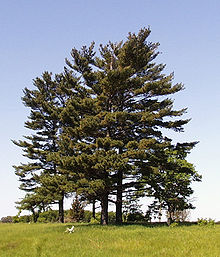Suillus americanus
| Suillus americanus | |
|---|---|

| |
| Scientific classification | |
| Domain: | Eukaryota |
| Kingdom: | Fungi |
| Division: | Basidiomycota |
| Class: | Agaricomycetes |
| Order: | Boletales |
| Family: | Suillaceae |
| Genus: | Suillus |
| Species: | S. americanus
|
| Binomial name | |
| Suillus americanus | |
| Synonyms[1] | |
|
Boletus americanus Peck (1887) | |
| Suillus americanus | |
|---|---|
| Pores on hymenium | |
| Cap is convex or flat | |
| Hymenium is adnate or decurrent | |
mycorrhizal | |
| Edibility is edible | |
Suillus americanus is a species of
Taxonomy and classification

Suillus americanus was first described scientifically by American mycologist
In 1931, French mycologist
Description
The cap is typically between 3–10 cm (1.2–3.9 in) in diameter, broadly convex with a small umbo (a central elevation) to flat with age. The cap margin is curved inwards in young specimens, and may have remnants of a yellowish, cottony veil hanging from it. The cap surface is colored bright yellow with red or brownish streaks and hairy patches. When the fruit body is young and moist, the surface is slimy; as the cap matures and dries out, it becomes sticky or tacky.[13]
The tubes which comprise the pore layer on the underside of the cap are 0.4 to 0.6 cm (0.16 to 0.24 in) deep, and have an adnate (attached broadly to the stem) to decurrent (running down the length of the stem) attachment to the stem. They are yellow, and stain reddish-brown when bruised. The yellow pores are large (1–2 mm diameter) and angular, and tend to become darker as they age.[13] The pores are slightly wider than long, so that there are about 9–10 pores per centimeter measured radially, but 12 to 13 per centimeter when measured tangentially, about halfway to the edge.[7] As is the case with all boletes, spores form on the inner surfaces of the tubes and sift through their openings to be borne away on the air currents outside.
The stem is 3–9 cm (1.2–3.5 in) by 0.4–1 cm (0.2–0.4 in), roughly equal in width throughout, often crooked, and becomes hollow with age. The color of the stem surface is lemon yellow, and it is covered with glandular dots that bruise if handled. The partial veil is not attached to the stem, and usually does not leave a ring on the stem. A whitish mycelium present at the base of the stem helps anchor the fruit body in the substrate. The flesh is mustard yellow, and stains pinkish-brown when cut or bruised.[14][15]
Microscopic characteristics
In
Edibility

This species is nonpoisonous[16] and sometimes regarded as edible, but opinions about its palatibility are mixed. It has no odor and its taste has been reported as mild.[16] One field guide suggests it has a "distinctive lemony tang",[17] and another says, "The yellow cap may remind you of chicken fat; it has a wonderfully savory mushroom flavor."[18] The slimy texture of the mushroom has been compared to okra.[10] One cookbook author suggests that the mushroom is ideal for spreads, for use on bread or as a dip; baking the fruit bodies in an oven will dry them for future use, and concentrate the flavor.[18] The slimy caps and the pore layer are typically removed before consumption.[19] Another field guide mentions that the "thin flesh hardly make this species worthwhile."[15]
Similar species
Suillus americanus is very similar in appearance to
Another lookalike species is Suillus subaureus, which can be distinguished microscopically by slightly smaller,
Habitat and distribution

Suillus americanus is a common species, and is found growing solitarily or in clusters on the ground throughout northeastern North America, north to Canada, where it typically fruits in the late summer and autumn.[9][14] It is also found in Guangdong, China,[22] an example of a disjunct distribution. Fruit bodies can often be found in drier weather when other species are not abundant.[10]
Suillus americanus is a
Allergenicity
Some susceptible individuals have experienced an allergic reaction after touching Suillus americanus. The symptoms of allergic contact dermatitis generally develop one to two days after initial contact, persist for roughly a week, then disappear without treatment.[19] Cooking the fruit bodies inactivates the responsible allergens.[11]
Bioactive compounds
Suillus americanus contains a
See also
References
- ^ "Suillus americanus (Peck) Snell 1959". MycoBank. International Mycological Association. Retrieved 2010-07-21.
- ^ Peck CH. (1888). "New York species of viscid boletii". New York State Museum Bulletin. 62 (2): 57–66.
- ^ Peck CH. (1872). "Report of the State Botanist 1869". Annual Report of the New York State Cabinet of Natural History. 23: 27–135.
- ^ JSTOR 3793035.
- OCLC 490436586.
- ISBN 978-0-85199-826-8.
- ^ JSTOR 3756143.
- ISBN 3-87429-254-1.
- ^ a b McKnight (1987), pp. 113–14.
- ^ ISBN 978-0-271-02891-0.
- ^ a b c Volk T. (2004). "Suillus americanus, the chicken fat mushroom". Tom Volk's Fungus of the Month. Department of Biology, University of Wisconsin-La Crosse. Retrieved 2010-01-31.
- ISBN 0-472-85610-3.
- ^ ISBN 978-1-58729-627-7.
- ^ a b Phillips R. "Suillus americanus". Rogers Mushrooms. Rogers Plants. Retrieved 2009-09-16.
- ^ ISBN 3-7682-1062-6.
- ^ ISBN 978-0-7627-3109-1.
- ^ McKnight (1987), p. 393.
- ^ ISBN 978-1-55832-214-1.
- ^ S2CID 36511162.
- ^ Kuo M. (December 2007). "Suillus sibiricus". MushroomExpert.com. Retrieved 2009-09-16.
- S2CID 86035482.
- ISBN 962-201-556-5.
- PMID 16894963.
Cited text
- McKnight VB, McKnight KH (1987). A Field Guide to Mushrooms, North America. Boston, Massachusetts: Houghton Mifflin. ISBN 0-395-91090-0.


